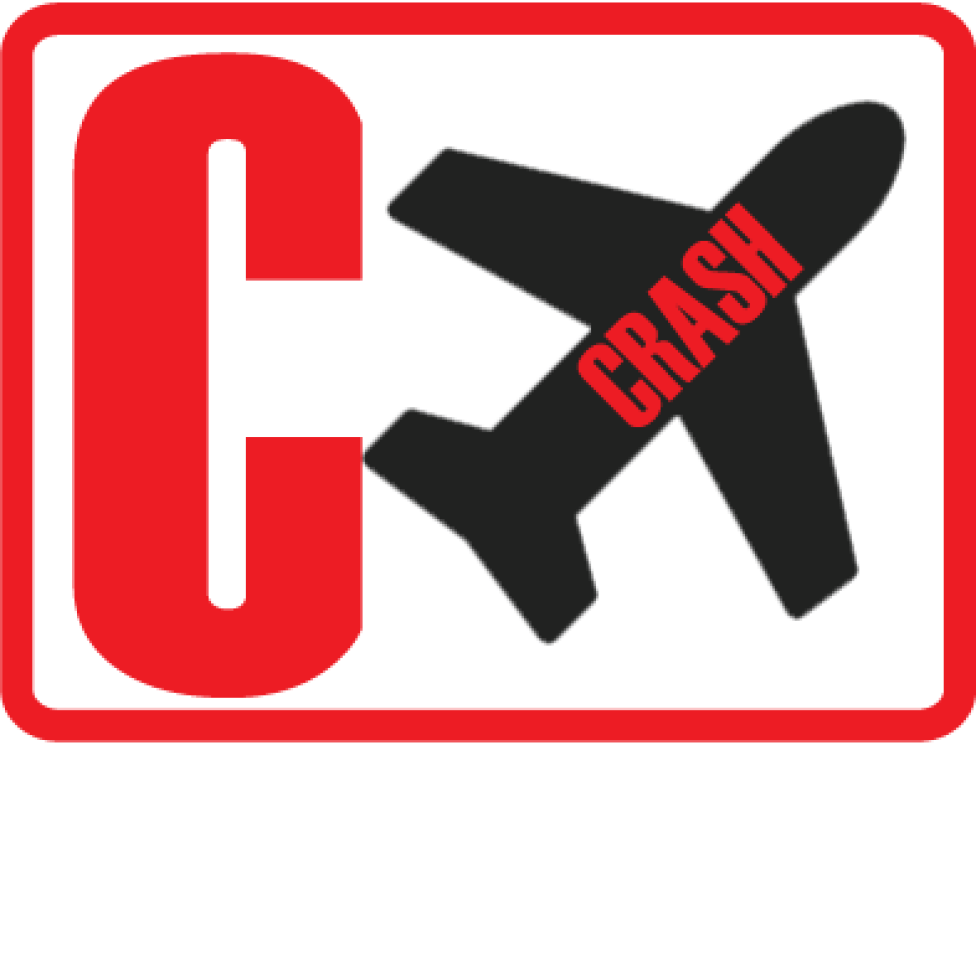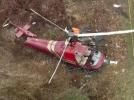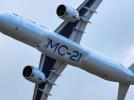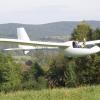PNG DH8A near Madang on Oct 13th 2011, both propellers oversped
PNGAIC have released their final report concluding the probable causes of the crash were:
Contributing safety factors
- The Pilot-in-Command moved the power levers rearwards below the flight idle gate shortly after the VMO overspeed warning sounded. This means that the release triggers were lifted during the throttle movement.
- The power levers were moved further behind the flight idle gate leading to ground beta operation in flight, loss of propeller speed control, double propeller overspeed, and loss of usable forward thrust, necessitating an off-field landing.
- A significant number of DHC-8-100, -200, and -300 series aircraft worldwide did not have a means of preventing movement of the power levers below the flight idle gate in flight, or a means to prevent such movement resulting in a loss of propeller speed control.
Other safety factors
- Prior to the VMO overspeed warning, the Pilot-in-Command allowed the rate of descent to increase to 4,200 ft per minute and the airspeed to increase to VMO.
- The beta warning horn malfunctioned and did not sound immediately when one or both of the flight idle gate release triggers were lifted. When the beta warning horn did sound, it did so intermittently and only after the double propeller overspeed had commenced. The sound of the beta warning horn was masked by the noise of the propeller overspeeds.
- There was an uncommanded feathering of the right propeller after the overspeed commenced due to a malfunction within the propeller control beta backup system during the initial stages of the propeller overspeed.
- The right propeller control unit (PCU) fitted to MCJ was last overhauled at an approved overhaul facility which had a quality escape issue involving incorrect application of beta switch reassembly procedures, after a service bulletin modification. The quality escape led to an uncommanded feather incident in an aircraft in the United States due to a beta switch which stuck closed.
- Due to the quality escape, numerous PCU‟s were recalled by the overhaul facility for rectification. The right PCU fitted to MCJ was identified as one of the units that may have been affected by the quality escape and would have been subject to recall had it still been in service.
- The FDR data indicated that the right PCU fitted to MCJ had an uncommanded feather, most likely due to a beta switch stuck in the closed position, induced by the propeller overspeed. It was not possible to confirm if the overhaul facility quality escape issue contributed to the beta switch sticking closed, because the PCU was destroyed by the post-impact fire.
- The landing gear and flaps remained retracted during the off-field landing. This led to a higher landing speed than could have been achieved if the gear and flaps had been extended, and increased the impact forces on the airframe and its occupants.
- No DHC-8 emergency procedures or checklists were used by the flight crew after the emergency began.
- The left propeller was not feathered by the flight crew after the engine failed.
- The investigation identified several occurrences where a DHC-8 pilot inadvertently moved one or both power levers behind the flight idle gate in flight, leading to a loss of propeller speed control. Collectively, those events indicated a systemic design issue with the integration of the propeller control system and the aircraft.
Other key findings
- The flaps and landing gear were available for use after the propeller overspeeds and the engine damage had occurred.
- There was no regulatory requirement to fit the beta lockout system to any DHC-8 aircraft outside the USA at the time of the accident.
- The autopilot could not be used during the accident flight.
- The operator‟s checking and training system did not require the flight crew to have demonstrated the propeller overspeed emergency procedure in the simulator.
- After the accident, the aircraft manufacturer identified a problem in the beta warning horn system that may have led to failures not being identified during regular and periodic tests of the system.
Safety issues
- A significant number of DHC-8-100, -200, and -300 series aircraft did not have a means of preventing movement – whether intentional or unintentional – of the power levers below the flight idle gate in flight, nor a means to prevent such movement resulting in a loss of propeller speed control.
- The aircraft manufacturer identified a problem in the beta warning horn system that left the system susceptible to failures that may not have been identified during regular and periodic tests of the system.
- After the accident, the facility that overhauled the propeller control unit (PCU) installed on MCJ (as the aircraft‟s right hand PCU at the time of the accident) identified a quality escape relating to the use of incorrect reassembly procedures for the installation of the beta switch within the propeller control unit. The quality escape may have led to uncommanded fearing of the right propeller.
The PNGAIC analyzed that the aircraft was handflown on a steep descent with the propellers governed at 900 rpm, the rate of descent reaching 4,200 feet per minute. The airspeed increased until it hit the maximum operating speed (Vmo) causing the overspeed warning to sound. The first officer recollected that the captain pulled the power levers back quite quickly. Shortly afterwards both propeller underwent signficant simultaneous overspeeds causing damage to the engines, complete loss of forward thrust and smoke intruding cockpit and cabin through the bleed air system although no fire was evident before ground contact. An off field forced landed became necessary because of the loss of forward thrust making the following accident inevitable.
There had been no preexisting malfunction of the aircraft with the exception of the beta warning horn, which had failed.
The crew did not refer to checklists or execute standard emergency procedures. As result the left hand propellers remained unfeathered until 72 seconds before impact causing significant engine damage and drag as well as shortening the time between the overspeed event and forced impact with ground. The PNGAIC stated that had the airspeed and rate of descent been within the usual ranges the time between onset of the emergency to ground contact could have been 9 minutes instead of the actual 4:12 minutes.
Flaps and Landing Gear would have been available but were not used although they could have contributed to soften the impact with terrain.
The PNGAIC stated: "Several similar propeller overspeed events have occurred in other DHC-8 aircraft that did not have a beta lockout mechanism fitted. These all had factors in common such as the aircraft being on descent, high airspeed, and power levers moved below the flight idle gate. At the time of the accident, DHC-8 aircraft outside the USA were not required to have a beta lockout mechanism."
The PNGAIC analyzed, that two actions were required to force the propellers into beta range in flight: the power levers must have been pulled rearwards and the flight idle gate triggers must have been raised to permit the power levers below the flight idle position. The PNGAIC analyzed that a click was heard on the cockpit voice recorder just after the overspeed warning activated exactly at the time when the flight idle gates were expected to be operated in order to permit the power reduction move the propellers into beta range.
Further support for the theory that the flight idle gates had been lifted comes from the fact, that the beta warning horn, although malfunctioning, did sound - however only after the propellers had already entered beta range. This is further evidence that the triggers had been lifted.
The PNGAIC concluded: "In the absence of any identifiable mechanical component failures, movement of the power levers behind the flight idle gate by the Pilot-in-Command is considered to be the only plausible explanation for the simultaneous double propeller overspeed in MCJ."
The PNGAIC analyzed: "As a consequence of the inhibition of the propeller speed control and overspeed protection systems in MCJ, all propeller speed control was lost. This meant the propellers were driven by the airflow like the vanes of a windmill, resulting in the propeller RPM limits being significantly exceeded, a condition exacerbated by the aircraft‟s high speed. With the propellers back-driving the engines, the power turbines oversped and the left engine failed. The right propeller underwent an uncommanded feather because of a malfunction in the PCU beta switch system. However, expert knowledge of the propeller control system – beyond that which any pilot could be expected to possess – would have been needed to unfeather the right propeller and the right engine could not therefore be used for forward thrust. The left engine had shut down due to internal damage, so a forced landing without power was inevitable. Although it could not be used for forward thrust, the left engine was still powering the left hydraulic system and the left AC generator was producing AC electrical power. The propeller blade tips exceeded the speed of sound. The CVR recording showed that the flight crew had great difficulty communicating above the very loud noise. The propeller noise also masked the intermittent sound of the beta warning horn."
With respect to the beta warning the PNGAIC analyzed: "In 1999 the manufacturer recommended and Transport Canada mandated the installation of a beta warning horn on the DHC-8 to alert pilots whenever the flight idle gate release triggers were lifted in flight. This reduced the risk of inadvertent movement of the power levers below the flight idle gate during flight. Audible warnings can be very effective, although research has shown they are not always heard or comprehended in sufficient time for an effective response to be made, particularly in times of high workload or distraction. Due to the malfunction of the beta warning horn in MCJ, the audible tone of the horn – which was a defence against in-flight raising of the power lever triggers – was absent. If the beta warning horn had functioned normally, the pilots may have recognised what was happening and taken appropriate action quickly enough to prevent the propeller overspeeds from damaging the engines."
The PNGAIC further stated that the aircraft manufacturer identified a problem with the beta warning horn functional tests on one of their corporate aircraft and issued a service bulletin with a revised test procedure. 5 of 91 aircraft covered by the service bulletin showed defective beta warning horns. The PNGAIC stated: "The manufacturer identified worn micro-switch retaining brackets as the factor underlying this malfunction, and a further service bulletin was issued to rectify the problem."
The PNGAIC analyzed that according to flight data recorder the right hand power lever had been moved to about 13 degrees below flight idle, outside the governing range of the propeller control. The right beta switch closed. It is likely that the power lever was subsequently advanced into the governing range again, however, the FDR indicates the right beta switch remained closed until the end of recording. Consequently the beta backup logic feathered the propeller, the stuck switch would have prevented the crew to unfeather the propeller had they tried to unfeather the propeller - but they did not.
With respect to that PCU malfunction the PNGAIC reported: "Shortly before this report was finalised, the NTSB indicated to the AIC that, had the PCU still been in operation on an aircraft, it would have been subject to recall for issues directly related to beta switches sticking due to incorrect application of installation procedures at overhaul. It is possible that the quality control issue associated with that recall was implicated in some way in the feathering of MCJ‟s right propeller, but extensive thermal damage to the right PCU precluded any examination and testing to determine the cause of the beta switch malfunction. The AIC was therefore unable to determine if the quality control issue contributed to the uncommanded feather of the right propeller or not."
The PNGAIC analyzed: "Although the right engine remained undamaged after the propeller overspeed commenced, the uncommanded feather of the right propeller meant it could not be used for forward thrust. If the PCU had not malfunctioned and the propeller had returned to the governing range, the flight crew may have been able to use the right engine for forward thrust and a forced landing may not have been necessary. However, if the right propeller had not feathered and the engine power turbine had continued to be driven by an overspeeding propeller, it is possible the right engine would have failed in the same way as the left engine because of the forces exerted on the power turbine by the overspeeding propeller."
With respect to not reading the checklists the PNGAIC analyzed: "If the flight crew had used the DHC-8 emergency procedures for propeller overspeed, engine failure, and forced landing, it may have altered the final outcome of the occurrence. In common with the manufacturer‟s other abnormal and emergency procedures, these procedures were designed for flight crew to deal with the emergencies without recourse to ad hoc actions. Why the flight crew did not respond with standard emergency procedures is not clear. They said afterwards there had been insufficient time. It is possible they were overwhelmed and this somehow prevented them from putting into effect the procedures and methods they had been trained to use in such circumstances. On the basis that the flight crew responded in an ad hoc manner to the emergency, it appeared that the operator‟s training system had been ineffective in inculcating into those pilots the company‟s prescribed responses to emergencies. There was no evidence that either pilot had completed the propeller overspeed drill during their simulator training or simulator checks. It is therefore possible that they had never demonstrated this procedure to a check captain."
The PNGAIC analysed that had the airspeed been reduced to 120 KIAS as recommended by the checklists after the propeller overspeed onset at descending through 7500 feet MSL, the aircraft could have remained airborne for a further 9 rather than the actual 3:20 minutes from 7500 feet MSL (total 4:12 minutes from actual altitude of onset) and travelled a distance of 18.9nm from 7500 feet MSL down.
The PNGAIC analyzed that observing the checklists the aircraft was WITHIN gliding range to Madang aerodrome - at the time of descending through 7500 feet, after descending more than 2500 feet after the onset of the propeller overspeeds, the aircraft was 17nm from the aerodrome - , however cautioned: "This section is not intended to imply that the flight crew should have attempted to glide towards Madang. Instead, it examines what may have been possible given the height at which the propeller overspeeds occurred, and how long the aircraft could have remained airborne if the flight crew had managed the situation differently." The PNGAIC further stated: "Prompt execution of the applicable emergency procedures would therefore have probably allowed the flight crew to glide to, or close to, Madang aerodrome, had they been able to see it. However, the flight crew could not see Madang and were also aware of a storm in the vicinity of the aerodrome."
The PNGAIC summarized the analysis: "In summary, the aircraft‟s degraded controllability and the high rate of descent/short time to impact were at least partly attributable to the fact that the flight crew did not use the standard emergency procedures early on. While it is not possible to determine exactly what would have happened if the flight crew had had more time to deal with the situation, it is reasonable to suppose it may have positively affected their ability to assess and manage the situation in a systematic manner."
Flight track of the aircraft after the propeller overspeed (Graphics: PNGAIC):
http://avherald.com/h?article=4446e933/0001














Komentarze